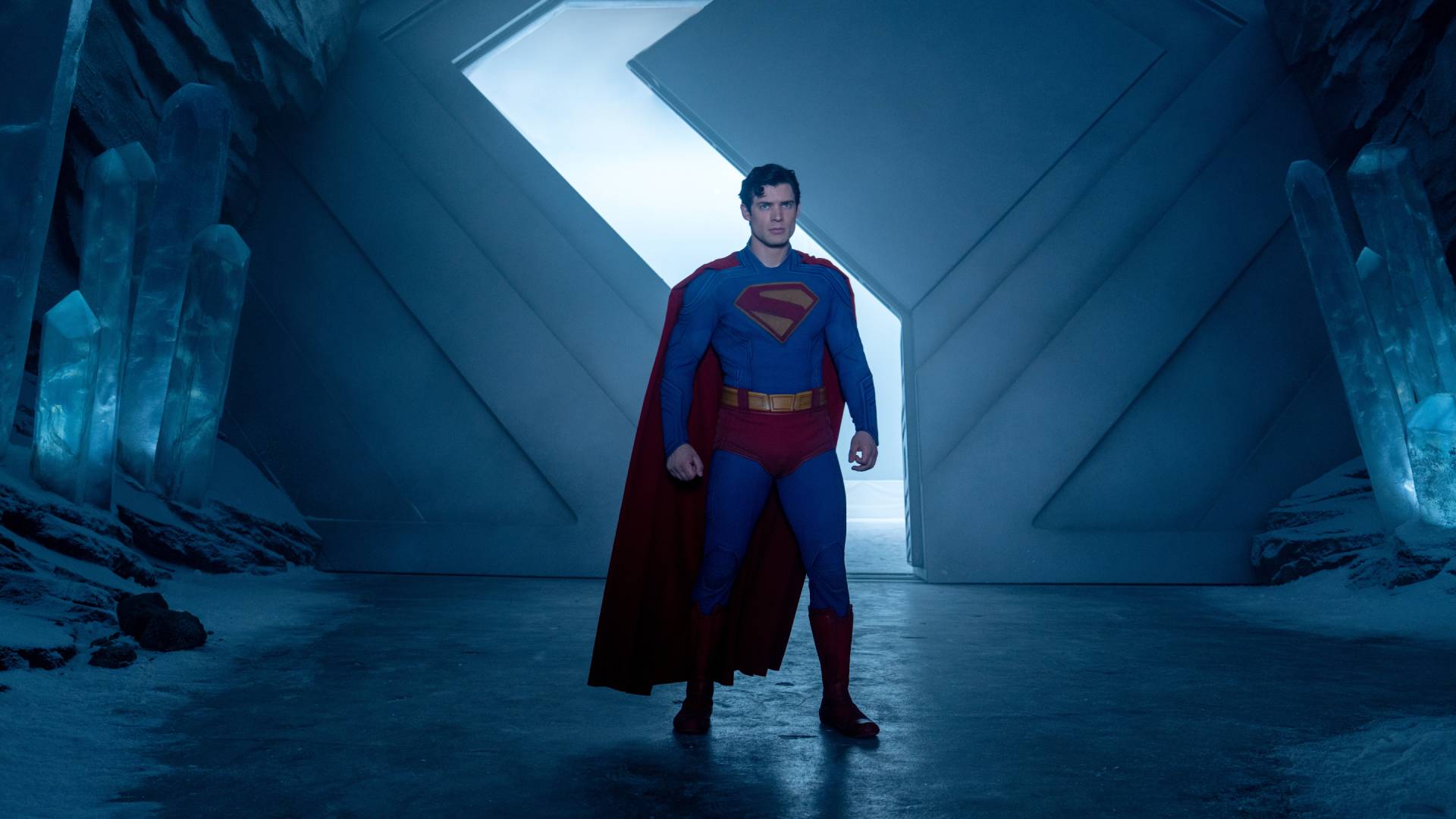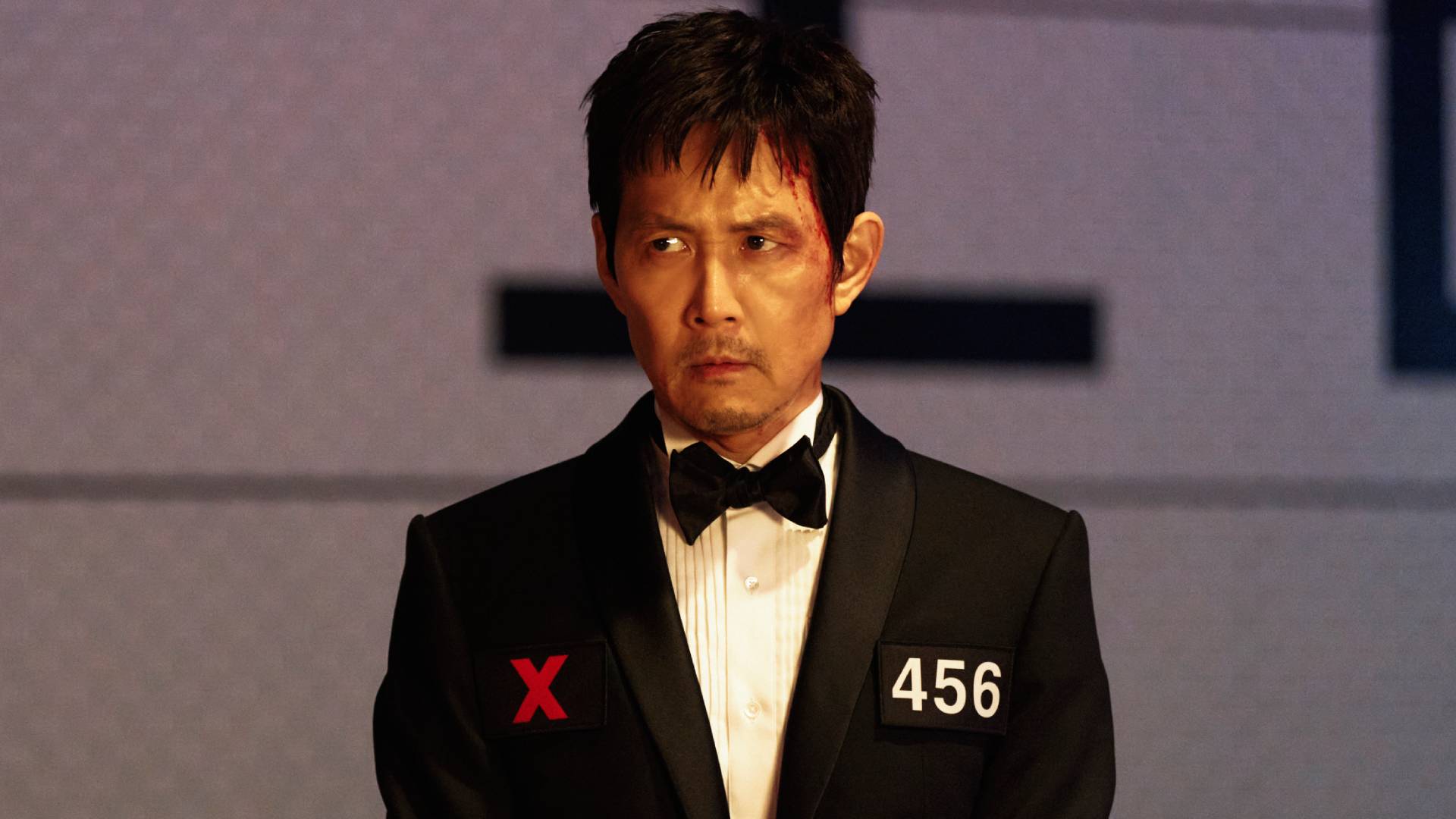Best QLED TV 2025: our favorite quantum dot displays for gaming
Boasting class-leading brightness and color fidelity, is now the time to upgrade to a QLED TV? Here are the best QLED TV options available right now.
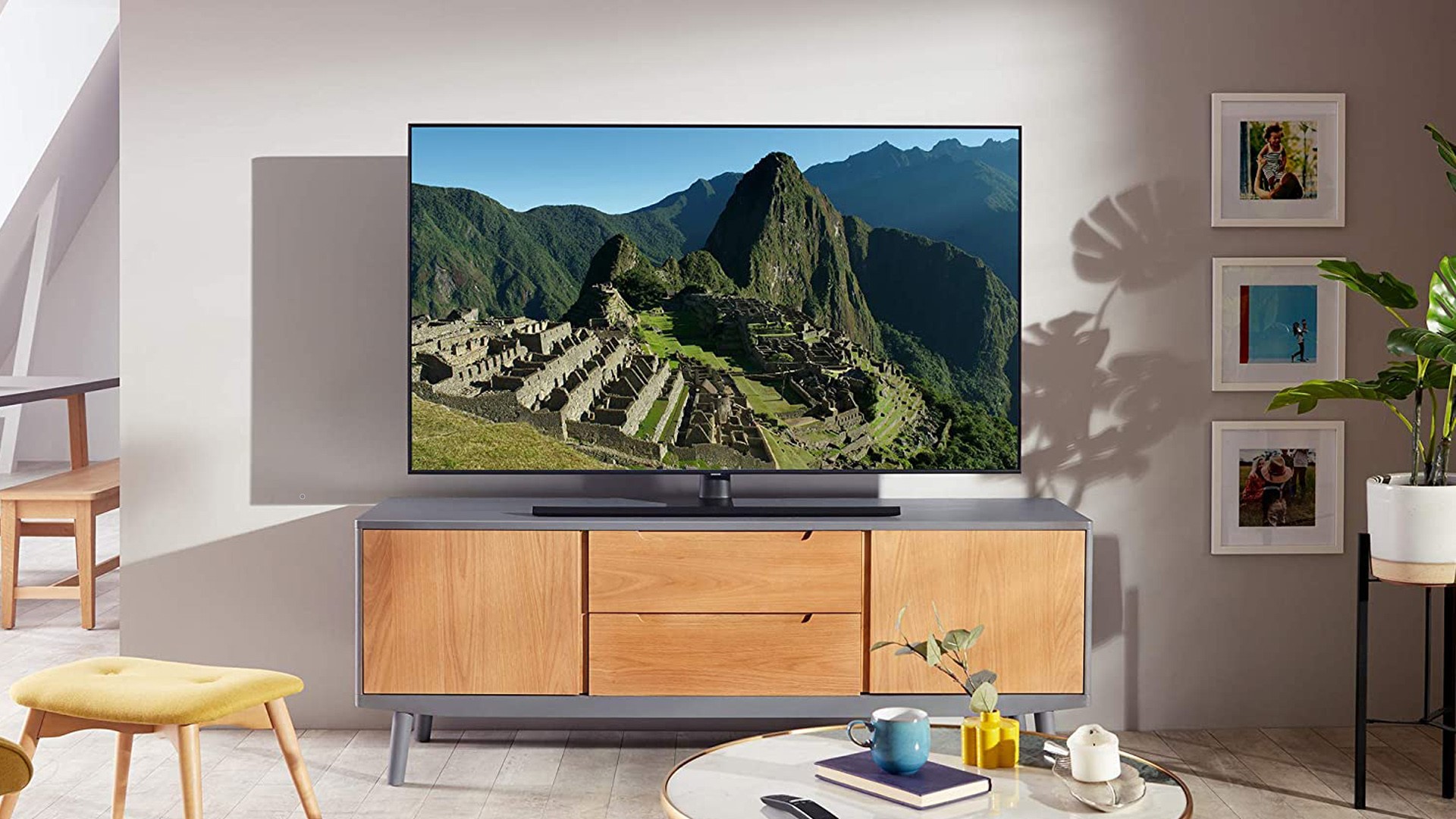
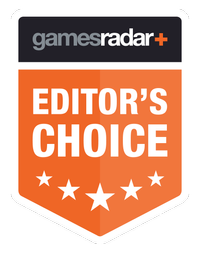
The best QLED TV options make for an affordable upgrade that's not quite as pricey as OLED. If you're trying to keep costs down, you'll end up coming across plenty of 'Quantum Dot' models that are brighter and sharper than traditional LED screens, and not all contenders are equal..
My current best QLED TV pick for gaming happens to be the Samsung QN90A, a screen that boasts excellent brightness and black levels that can challenge some OLED models out there. That said, Quantum Dot layers are becoming something of a standard with mid range mini LED panels, so unless you're aiming for a super cheap screen, you'll be able to choose from a variety of the best gaming TVs equipped with the tech.
At the same time, it can be hard to separate the QLED TVs that can actually deliver better visuals using the panel type, so I've rounded up a bunch of tested models that fill the brief for your consideration. If you're looking for a 4K display that doesn't come with the premium price of OLED models, you've absolutely come to the right place.
The quick list
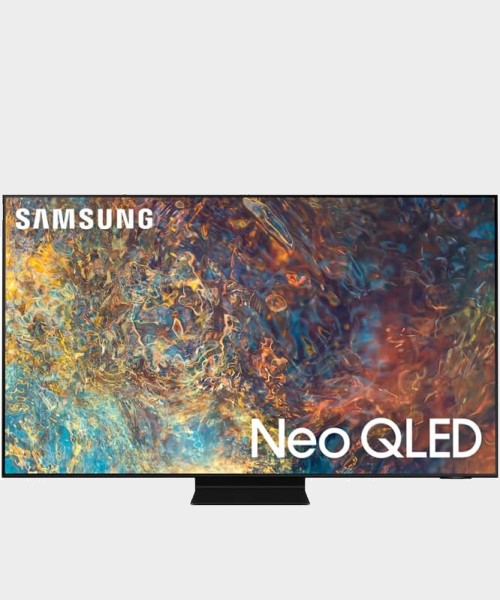
With a Mini LED backlit panel, plenty of gaming options, and crystal clear picture, the Samsung QN90A is the best QLED TV on the market right now.
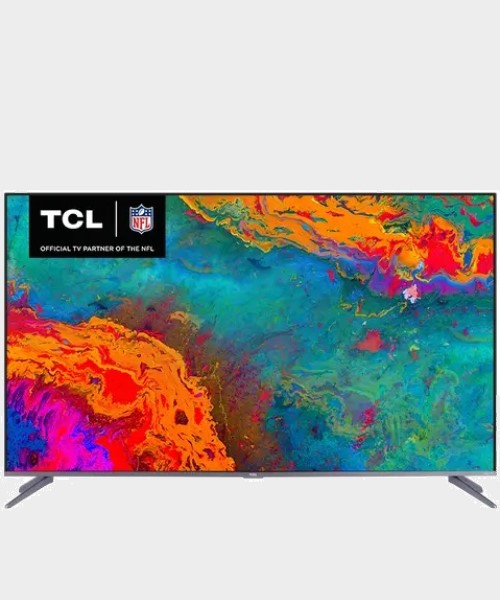
The TCL 5-Series never disappoints when it comes to QLED quality on a budget. You're still getting excellent picture and plenty of HDR options here as well.
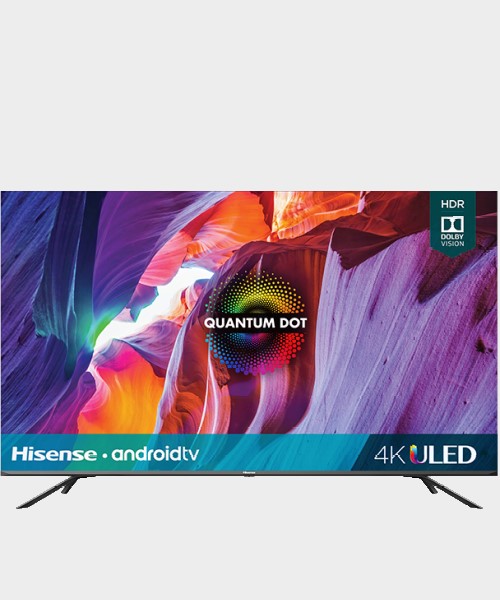
With full local dimming, some fantastic gaming features, and all the Dolby vision you could ask for, the Hisense H8G is a fantastic mid-range all-rounder. It's also regularly on sale.
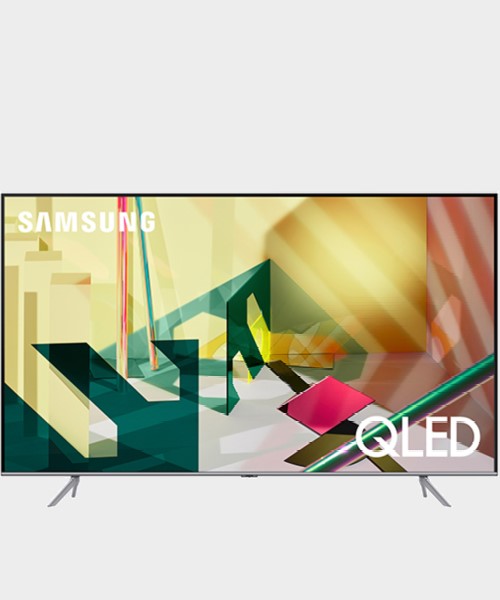
Samsung produces some of the best QLED TVs on the market, but the Q70T is uniquely positioned to offer the best value overall for its relatively low price.
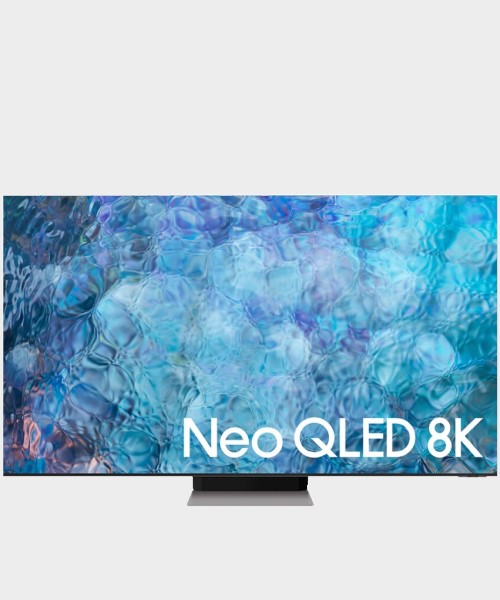
It's pricey, but if you're after that luxury 8K resolution, the Samsung QN900A is your best bet. This is a premium display packed with high-end features.
The best QLED TV overall
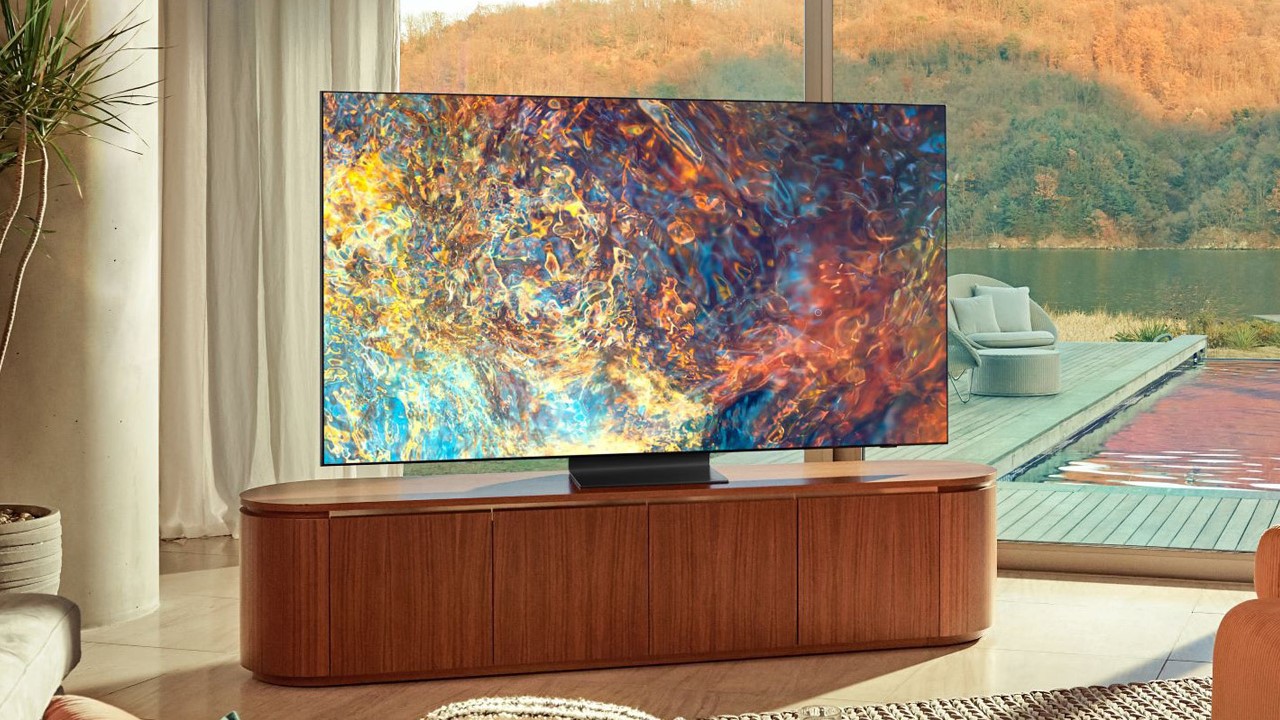
Specifications
Reasons to buy
Reasons to avoid
The Samsung QN95A elevates QLED tech with the introduction of this Mini-LED-powered 4K flagship. With deep blacks, excellent picture quality and levels, and enviably precise HDR management, the QN95A is a real rival to the best that OLED can offer.
✅ You're looking for the best QLED: Samsung's blend of QLED and mini LED tech is sublime, providing colors, contrast, and HDR that rivals OLED.
✅ You want a wall mounted TV: Thanks to its One Connect box housing bulky IO, the QN90A won't stick out much when wall mounted.
✅ You want 4K 120Hz: Samsung's thin panel has a refresh rate that'll match your new gen console's max abilities, all while providing crisp 4K visuals.
❌ You don't have a lot of space: The QN95A itself is thin, but you'll have to make room for its additional one connect box.
❌ You want Dolby Vision: This pricey screen lacks Dolby Vision support, so if you're a fan of the tech, you may have to shop around for an alternative.
Features: The TV comes with a One Connect Box which connects to the set via a fibre optic cable. This is home to four HDMIs, all of which provide 4K 120Hz support - good news if you have both a PS5 and Xbox Series X, or a gaming PC plugged in too. Smart connectivity is provided by Tizen, Samsung’s smart TV platform and there’s a wide range of apps available, including Netflix, Prime Video, Apple TV+, Disney+, and Now, plus all the usual catch-up TV services.
New on the QN95A is the Game Bar, a dedicated interface for tweaks and adjustments. Latency is very good. We measured input lag at 10.1ms (1080/60), in standard Game mode. When it comes to HDR, HDR10, HLG and HDR10+ Adaptive are all supported, but there’s no Dolby Vision compatibility.
Design: If you're looking for a slick futuristic TV for your living space, the QN95A should catch your attention. It's ridiculously thin thanks to its external innards, and it's pedestal stand is so minimalist that it almost looks artistic. If you're not into TV benches and units, you'll be able to whack it up pretty flush to the wall without having to create an alcove or embed it.
Performance: Image quality is superb, thanks to an advanced AI-powered Neo Quantum 4K processor. An Intelligent Mode optimises all sources, making this is an easy screen to live with, whatever you watch. Even the TV sound system is a cut above, thanks to Samsung’s OTS+ sound system.
Verdict: Overall, a stunning high-end TV option, and if you want the absolute best 4K QLED screen Samsung makes, then the Neo QLED QN95A is it. File under expensive, but ridiculously good.
For information, this television is referred to as the QN90A in the US, while in the UK and Europe is called the QN95A.
The best budget QLED TV
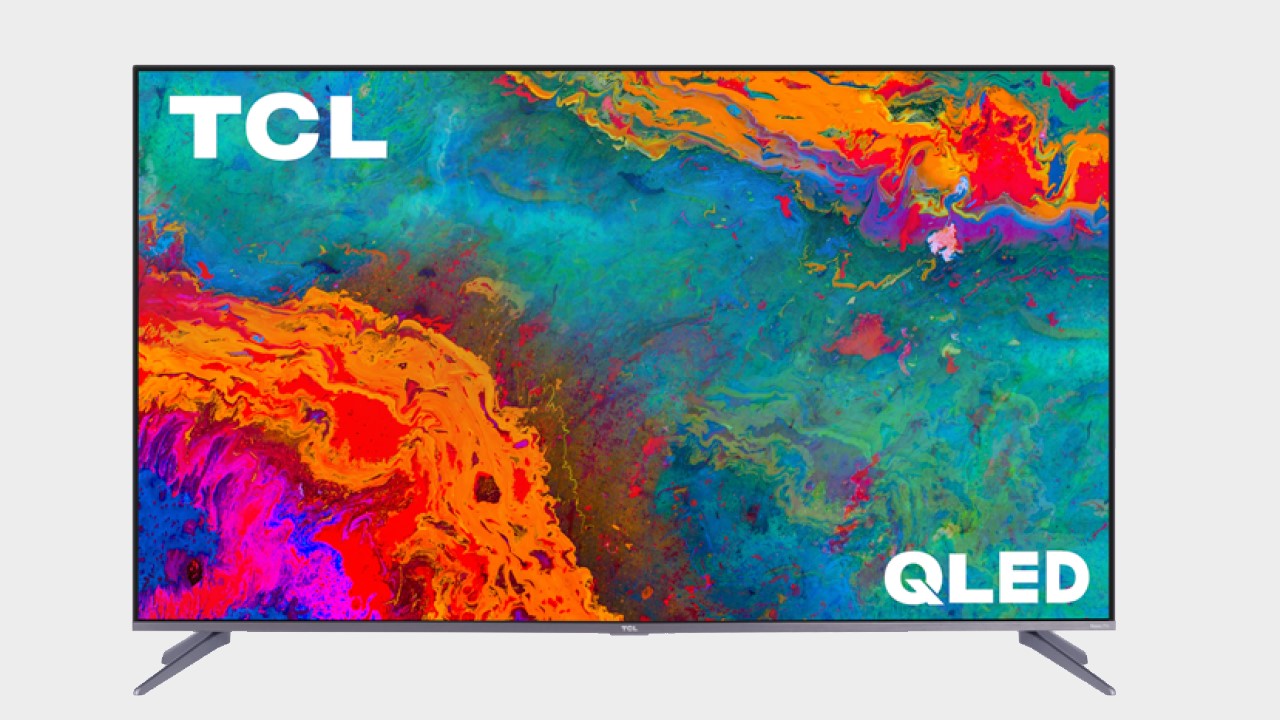
2. TCL 5-series
Specifications
Reasons to buy
Reasons to avoid
The TCL 5-series is a wonderful entry-to-mid-range QLED TV. It's another example of the manufacturer really hitting the sweet spot of offering quality televisions for great value prices, but without having to compromise too much on features and tech.
✅ You're want a great value QLED screen: TLC's budget model is fantastic value considering its features.
✅ You want flexible performance: The TV's 'Game Accelerator' let's you trade resolution for refresh rate.
✅ You need decent smart features: Armed with Android, this TV will provide you with Google Assistant and Alexa compatibility.
❌ You want a true 4K 120Hz display: While it can achieve 120Hz with sacrifices, it natively runs at 4K 60hz.
❌ You'd rather splash out on a big brand name: We don't condone defaulting to big brands, but it's still a valid reason when it comes to budget shopping.
Features: One thing to be sacrificed is the lack of HDMI 2.1 support. So, if you're on the hunt for something for your PS5 or Xbox Series X, you may have to seek something else further up the budget spectrum. Otherwise, it has USB ports, an optical audio output, and an AV mini-jack input so you're well covered when it comes to making this the main screen for the home or an entertainment setup.
Design: TLC's approach to TV aesthetics is pretty admirable, as you wouldn't know the 5-series was a budget model at a glance. Sure, upon closer inspection you'll know it's worlds apart from its premium rivals, but it's going to look the part in your living space compared to televisions of old with their chonky bezels. It feels like only yesterday that the latest Sony and Samsung screens came with frames as thick as skirting boards, and that's worth remembering when judging this cheap TV's looks.
Performance: It might be a 60Hz panel, but TLC has added an 120Hz 'Game Accelerator' to its screen to somewhat bridge the refresh rate gap. The catch? Well, the tech trades out half the displays 4K resolution to achieve faster visuals, which might give some UHD fans out there the ick. Still its gaming credentials do hold steady when factoring in its native limitations, and input lag is pleasingly low.
Verdict: Overall picture quality is still excellent and is the best representation of the value for money you'll get from investing in the TCL 5-series: HDR peak brightness of around 400 nits, combined with Dolby Vision means you're getting excellent colours, contrasts, and crispness however bright your room is. As a great value 4K panel and worthy of discussion at the best QLED TV table.
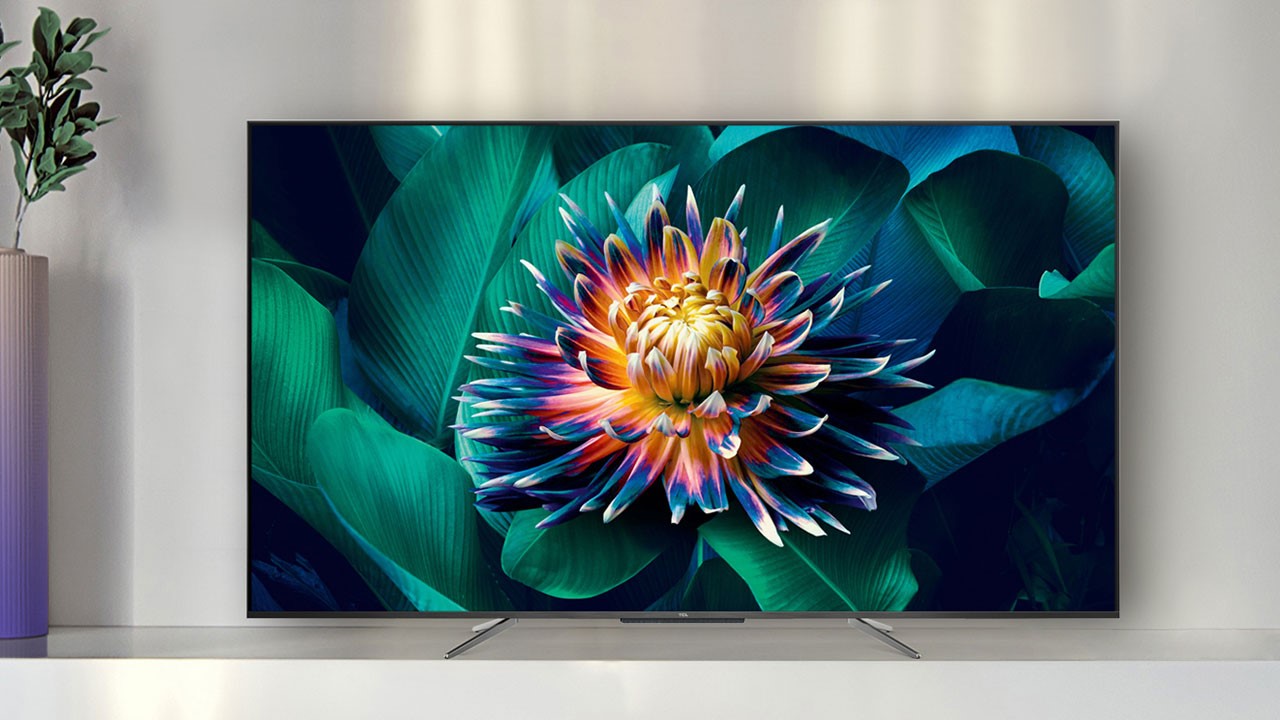
3. TCL C71
Specifications
Reasons to buy
Reasons to avoid
The price tag may be low, but the TCL C71 boasts pretty impressive tech considering its price point, and it's a brilliant buy for players from the UK.
✅ You want great features for less: It might be a budget model, but this QLED screen boasts HDR10+, Dolby Vison, and Android smart features.
✅ You are on a strict budget: TLC's budget contender will help you not stray over the £500 mark.
✅ You want integrated smart apps: This TV's Android capabilities will ensure you can access Netflix and other streaming services without a console or PC.
❌ You need 120Hz: Budget screens largely stick to 60Hz, and that'll matter if you're into FPS games.
❌ You want something slimmer: If you're looking fore something that'll fit flush to a wall, you'll need to spend a bit more.
Features: The TLC C71 offers up plenty of premium features for TV that costs much less than bigger brand alternatives. Notably, the display includes HDR 10+, Dolby Vision, and Smart Android TV capabilities, which we'd expect to see in more expensive models. Naturally, it uses a 4K 60Hz panel rather than jumping on the 120Hz bandwagon, so we're not quite at the stage of seeing 120Hz for well under £500 (yet).
Design: While the TLC C71 isn’t the slimmest of TVs, it still looks like a modern display with a pleasing aesthetic. Two pedestal feet can be positioned centrally or spaced wider apart, to suit different AV furniture, which is handy given you might be still using an old CRT corner unit from back in the day (looking at you, Mum and Dad).
Performance: Picture quality is hugely impressive given the price tag. Images have dynamic snap, and Dolby Vision really helps with 4K content from Netflix. HDR peak brightness is higher than is typical at this price point - we measured 400 nits - which makes the set look good in both dark and brightly lit rooms. There’s also a rather decent Smart HDR mode to make the most of non-HDR content. Perhaps the biggest surprise is just how effective the set’s Game mode is. We measured image lag at an impressively low 9ms (1080/60), making this a great low-cost games screen.
The C715’s sound system does a fair job, but we advise you to plan in a soundbar or one of the best surround sound systems at some point. Until then, stick with the Game or Movie audio pre-sets, which widen the stereo soundstage.
Verdict: You'll struggle to find a screen that offers better bang for buck than the TLC C71 in the UK, and it's pretty impressive for a budget option. The display is a testament to the fact that great features don't have to cost the world, with the main reason for spending more relating to screen tech and refresh rates.
The best mid-range QLED TV
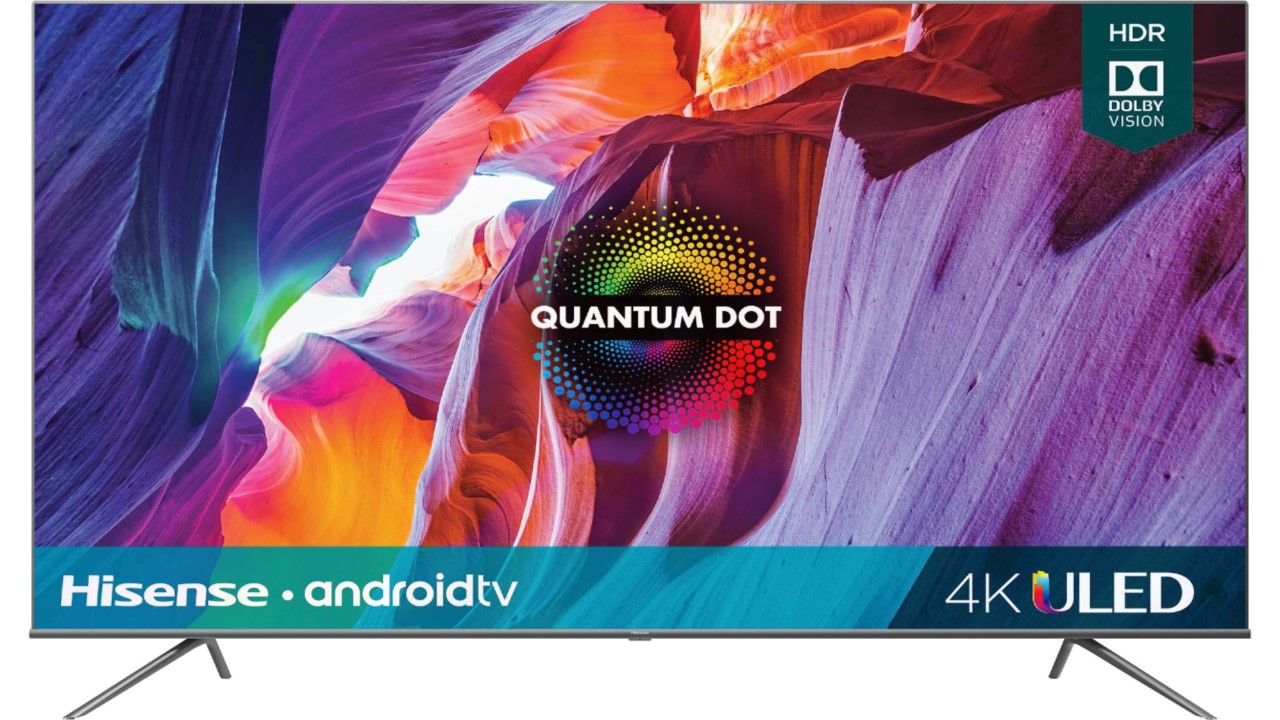
4. Hisense H8G
Specifications
Reasons to buy
Reasons to avoid
The Hisense H8G is a US model of mid-range 4K QLED TV that is hard to beat if you're searching for pure bang-to-buck value.
✅ You're looking for midrange specs: Hisense's middle ground screen strikes a nice balance between features and price.
✅ You want great HDR: This screen's HDR abilities are commendable, particularly when it comes to brightness.
✅ You've got lots of consoles: It might lack HDMI 2.1, but there are plenty of inputs to accommodate all your consoles, whether you've got a Switch or PS5.
❌ You want to make the jump to 120Hz: If you're curious to try out shooters on the PS5 at 120Hz, you'll have to splash out on a more expensive model.
❌ You want something striking: Aesthetically, the H8G plays it incredibly safe, and that may bore some of you out there.
Features: The lack of HDMI 2.1 is to be expected at this price range really, but if you're simply hoping to connect up your PS5 and Nintendo Switch to a 4K screen, you'll have enough ports to do so. The addition of Dolby Vision, HDR10+, HDR10, and broadcast HLG support is welcome, alongside a Full Array Local Dimming (FALD) backlight, and Hisense's Vidaa U4 OS fills the brief when it comes to smart functionality.
Design: It's not a flashy TV in terms of design and build but it'll safely melt into any home or gaming setup. Calling Hisense's approach unremarkable sounds a little unfair, but the aesthetic here is pretty much textbook. Ultimately, you'll have to spend more if you want something slimmer and more striking, as H8G plays it traditional and safe.
Performance: This range of QLED has some excellent HDR performance, and Quantum Dot colour tech, and you'll get a great picture straight away after setup. The HDR performance and peak of 650 nits is solid for a QLED TV of this class and pictures look vibrant and full of life. The addition of Dolby Vision, HDR10+, HDR10, and broadcast HLG support is welcome, alongside a Full Array Local Dimming (FALD) backlight.
Verdict: All in, the H8G series is a quality QLED TV and nails a sweet spot of offering QLED quality without a lofty price tag. It's missing the 120Hz abilities included with premium models, but not everyone has the hardware to make full use of higher refresh rates anyway.
The best value QLED TV
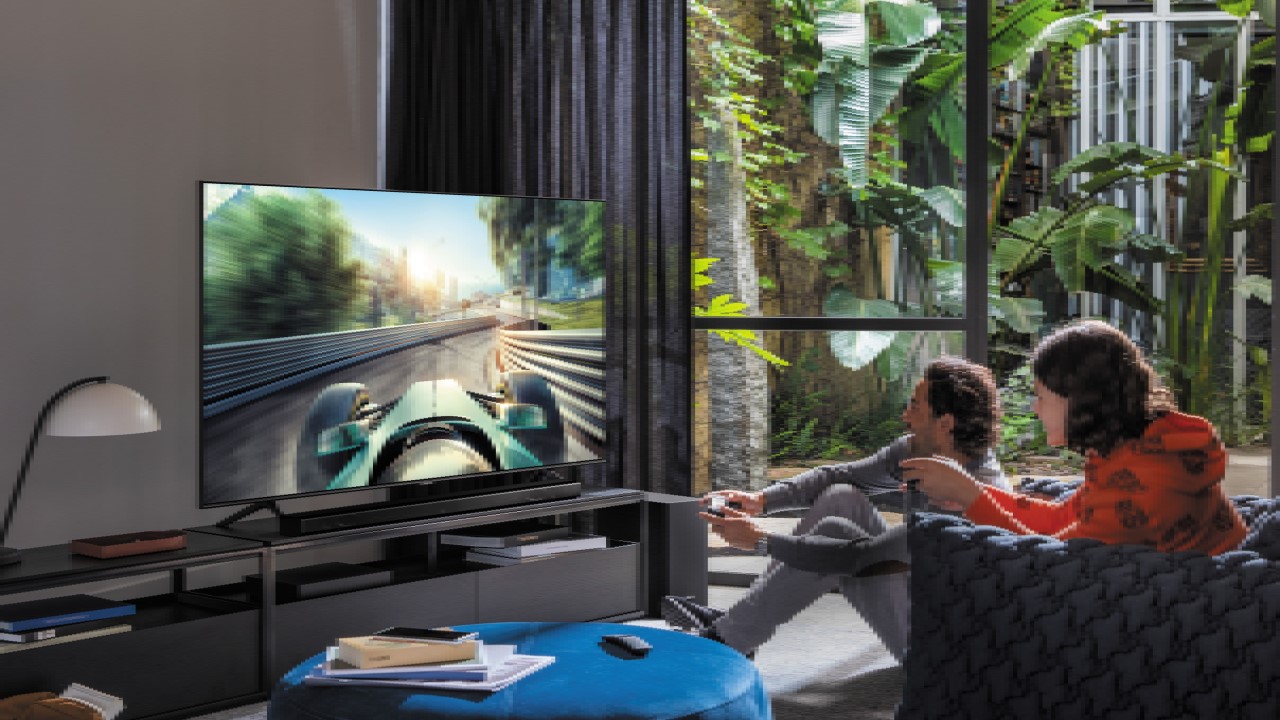
5. Samsung Q70T
Specifications
Reasons to buy
Reasons to avoid
If your main priority is value for money, the Samsung Q70T is a fantastic model with plenty of spec and features to offer. It might have arrived in 2020, but if you can find it at retailers, you'll end up paying less for some of the same panel perks tied to the latest screens.
✅ You want premium specs for less: The Q70T offers features and specs on par with the latest premium models.
✅ HDR is a priority: Samsung knows how to implement HDR, and this screen provides excellent brightness with the setting enabled.
✅ You looking for great contrast: We're not talking OLED levels of contrast, but the Q70T still packs a visual punch.
❌ You want the latest model: Spending more will enable you to pick up a screen from 2023.
❌ You want more 4K 120Hz ports: If you've got a PC and a PS5, you'll perhaps want to connect both at the same time.
Features: Available in 55-, 65-, 75- and 85-inch screen sizes, the Samsung Q70T is one of the cheapest 4K TVs to offer 120fps High Frame Rate (HFR) support, and its picture performance is powered by the cutting leading-edge AI processing used on Samsung’s more expensive models. As it turns out, that lack of local dimming isn’t quite the compromise you might imagine. There are four HDMI inputs but only one is 4K 120fps ready; all the rest are 4K 60fps capable.
The caveat is that Samsung doesn’t offer Dolby Vision HDR, instead limiting dynamic metadata support to HDR10+. In terms of apps, while the Q70T comes without Freeview Play, Samsung’s smart Tizen compensates with a full complement of catch-up TV channels, plus all key streaming apps, including Netflix, Amazon Prime Video, Disney+, Rakuten TV, Apple TV, and YouTube.
Design: Aesthetically the set’s also winner, with an ultra-thin bezel and on-trend central T stand. You could say it is fairly conservative looks wise, but in honesty, the focus with the latest TVs is what's on their screens rather than around them. Still, Samsung has kept bulk to a minimum with this display, which should benefit those of you who prefer wall mounting.
Performance: Instead of a full backlight array, the set employs a novel Dual LED arrangement which enhances contrast and black level performance. Watch a movie and the letterbox bars are close to proper black. It’s also a decent HDR performer. We measured peak brightness at 600 nits. While the Q70T doesn’t match the absolute image quality of Samsung’s priciest QLEDs, the set is still wonderfully contrasty, and with fast-moving action content, you’ll not notice its lack of HDR precision.
Verdict: Overall, the Q70T is a terrific buy, particularly for those looking for one of the best TVs for PS5 and Xbox Series X and best 120Hz 4K TVs too.
The best 8K QLED TV
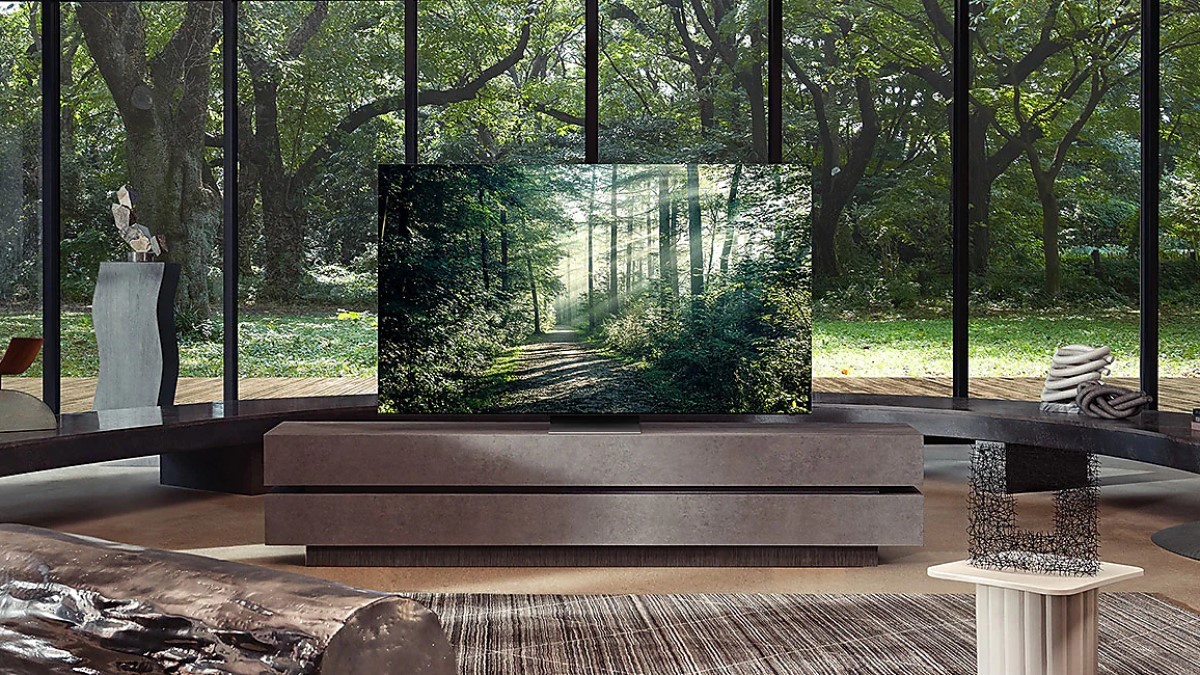
6. Samsung QN900A
Specifications
Reasons to buy
Reasons to avoid
8K still feels a bit like a novelty, but the Samsung QN900A the screen we'd recommend for players looking to futureproof their setup. If you've got a shiny new RTX 4090, RX 7900 XTX, or one of the best graphics cards around, this TV might be worth a look.
✅ You want to experience 8K: Samsung's UHD screen can pump out twice as many pixels, which will appeal to any of you looking for a glimpse into the future.
✅ You've got a high end PC: It's perhaps not practical performance wise, but if you've got the GPU, you'll be able to try out games in 8K.
✅ You want a thin TV: Just like Samsung's QLED 4K model, the QN900A is incredibly thin thanks to its external One Connect box IO.
❌ You've got no access to 8K content: While the QN95A will upscale to 8K, reaping its true benefits requires the right hardware.
❌ You're not made of money: As you'd perhaps expect, this 8K TV costs a pretty penny, and similar 4K models are available for a chunk less.
Features: This Neo QLED set uses advanced Mini LEDs that facilitate better precision than a conventional full-array backlight. In addition, HDR support covers regular HDR10 and HLG, along with HDR10+. However, Dolby Vision is missing from this premium panel, which will likely disappoint both film fans and console owners alike. In the audio department, the QN900 actually has ten speakers built into its slim frame. There’s no OTS support for Dolby Atmos, though.
Design: The set looks the part thanks to its ultra-slim Infinity Design. Its ‘invisible’ bezel effectively makes the panel look like a floating picture. Just like the Samsung QN95A, this 8K screen uses a One Connect box, meaning you'll connect all your consoles and other devices into an external unit unit, which then uses a single cable to feed the TV.
Performance: The QLED panel within the Samsung QN900A is pretty similar to the QN95A, offering exceptional brightness, contrast, and black levels. Naturally, it's also a 'true' 8K TV, but you'll have to stick with 4K to actually experience the benefits of its 120Hz refresh rate, as its HDMI 2.1 are capped to 60Hz when catering to native resolution.
As mentioned above, those of you with a Nvidia GeForce RTX 4090 or AMD Radeon RX 7900 XTX could use this screen to play games at 8K. Whether you'll actually want to sacrifice game settings to do so is another matter, but you'll still be able to brag to your friends that you can run things at double the resolution they can.
Verdict: We reckon it'll be a few years yet before 8K starts becoming a standard, but the Samsung QN900A is on hand to help you achieve beyond UHD right now. It doesn't sacrifice premium qualities to reach higher resolutions, so cost is really the main choice when choosing between this screen and 4K counterparts.
Best QLED TV: FAQs
Which company makes the best QLED TV?
Samsung is usually the first brand that springs to mind when QLED is mentioned, but there are various manufacturers out there using the tech. If you're looking for cheaper options, TCL and Hisense will see you right with their entry-level and midrange models. If you'd prefer to keep things premium, Samsung is the way to go.
Is a QLED TV really worth it?
QLED TVs can be more expensive, but if you're looking for vivid colors and excellent brightness, it's worth the investment. While traditional LED screens use either edge or backlit methods to illumine your screen, QLED features thousands of individually lit pixels that can independently change color, resulting a sharper and more vibrant image that looks more realistic.
Can QLED TVs get burn-in
QLED TVs can suffer from burn in, but not through normal use. Rather than suffering from permanent damage, these screens are more likely to retain an image that'll eventually fade. If that same image remains on screen long enough, it could theoretically turn into burn in, but it won't happen as quickly as it will on an OLED screen.
Are QLED TVs better than OLED TVs?
Typically, QLED TVs can produce brigher visuals, while OLED screens produce 'true' blacks and contrast. That said, your milage will vary from model to model, so it's always checking the performance of each individual screen. Ultimately, QLED and OLED provide a similar uplift over traditional LED panels, and whether one is better than the other is down to personal preference.
How we test QLED TVs at GamesRadar+
Why you can trust GamesRadar+
Our team of screen experts spend hours testing TVs for gaming, and many of our reviews feature QLED tech. Figuring out whether each model holds up to our standards involves using a blend of our hands on and technical experience, all while playing new releases on the latest hardware.
Each QLED TV we review is put through the same tests to evaluate specs, design, features, and performance, which ultimately determines if its good value for money. From pushing the upper limits of a TVs resolution and refresh capabilities to assessing build quality and functionality, only the best are able to make it through our gaming gauntlet and onto our recommended list.
For more information, check out our full Hardware Policy for a rundown on how we approach all of our reviews and testing.
Want to check out some of the latest TV deals at the best retailers? These stores often have some excellent sales running:
USA: Amazon | Dell | Best Buy | Walmart | Newegg
UK: Amazon | Currys | Very | Argos | AO
If you prefer your screens enormously big, then check out the best 4K projector and best projector for PS5 and Xbox Series X.
Weekly digests, tales from the communities you love, and more
Steve May is a home entertainment technology specialist. Creator of Home Cinema Choice magazine, Steve writes about gadgets and gizmos for GamesRadar, T3, Louder Sound, TechRadar, Home Cinema Choice and Yahoo. He’s also the editor of The Luxe Review and Pro AV site Inside CI. Steve once wrote a games column for legendary British comic 2000AD (and has a badge to prove it), and maintains that when it comes to top shooters, Doom is the GOAT.
- Rob Dwiar
- Duncan RobertsonHardware Editor


